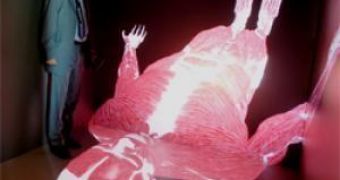In computer imaging, 4D consists of time-lapsed 3D series of solid models generated from measured data, to represent the state of the subject body at two or more different times. This method is often used in medical imaging to observe the changes that have taken place over time.
A team of scientists at the Sun Center of Excellence for Visual Genomics at the University of Calgary Faculty of Medicine have created the first ever 4D human atlas, which they called CAVEman, to allow researchers to physically get inside their experiments by translating medical and genomic data into 4D images.
"This project is a major breakthrough in medical informatics and systems biology," says Dr. Grant Gall, dean of the Faculty of Medicine at the University of Calgary. "My congratulations to Christoph Sensen and his team for building a tool that will be useful not only to researchers studying disease, but also to physicians exploring new pathways in surgical planning."
Based on data from basic anatomy textbooks, the internal organs and body systems were reproduced into animated drawings, which were then converted into Java 3DTM to bring them to life in the CAVE environment.
"CAVEman is designed to look like a real human, but can also be sized to any scale we want," says Christoph Sensen, PhD, director of the Sun Center. "We can display all or only a few select components of the model at any given time."
The model will be used in various medical applications, like the genetic investigations of various diseases and new approaches to targeted treatments.
"This technology is a powerful tool for my research into how genetic mutations lead to developmental problems such as cleft lip and palate," says Benedikt Hallgrimsson, PhD, associate professor of cell biology and anatomy, U of C's Faculty of Medicine. "As the technology grows, it will be useful for diverse studies of growth and development, both for creating predictive models and also for complex visualization."

 14 DAY TRIAL //
14 DAY TRIAL //